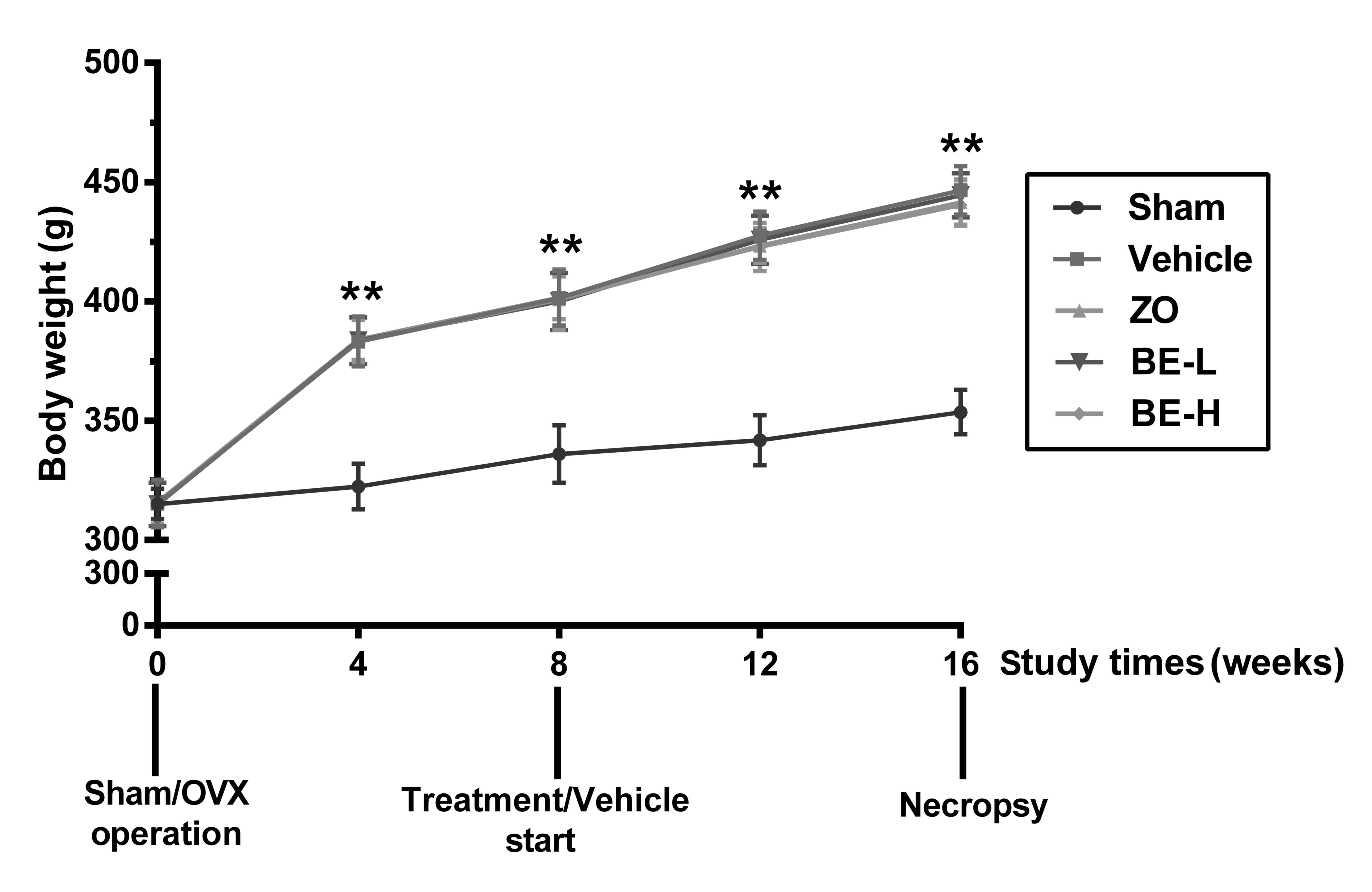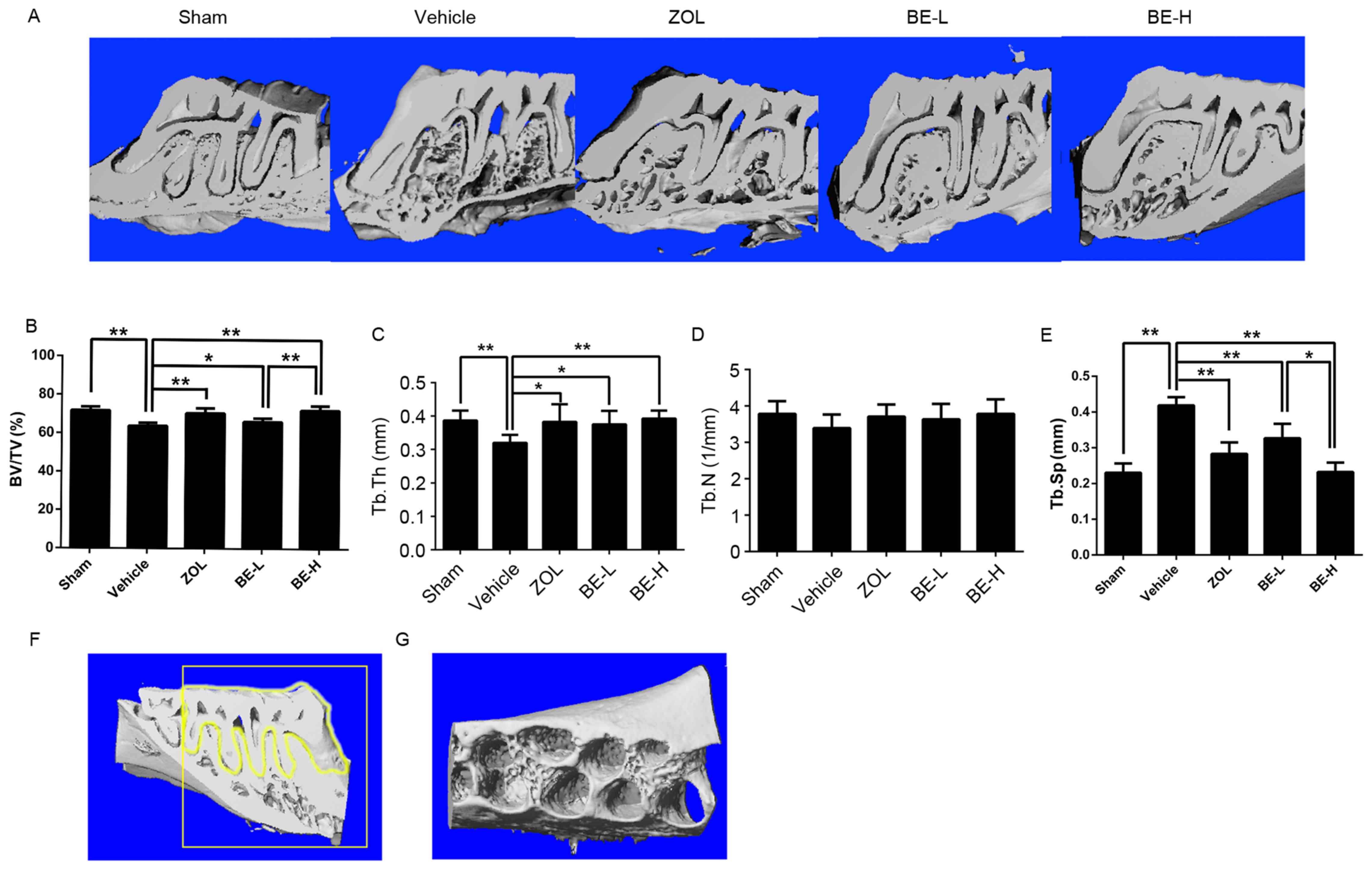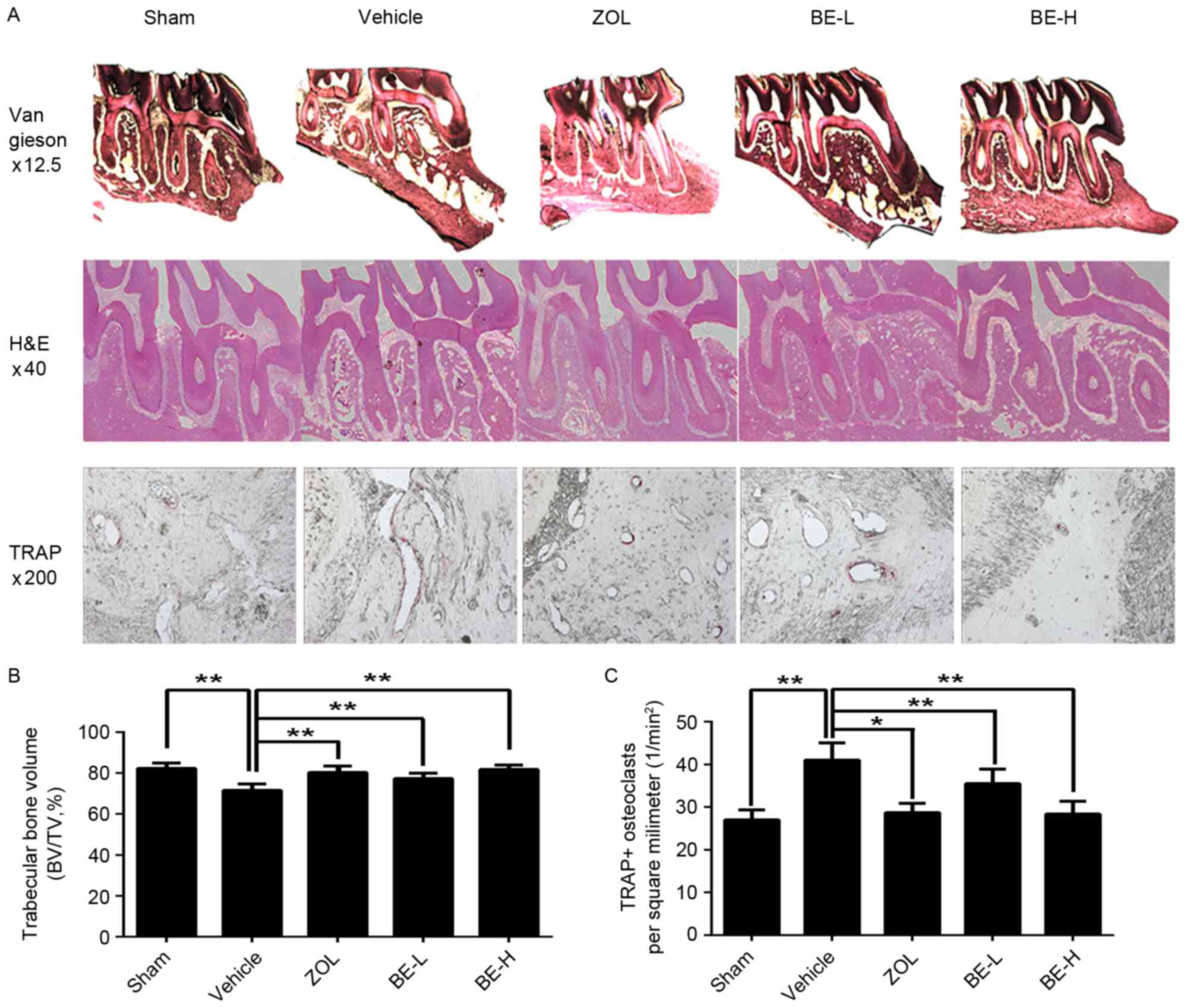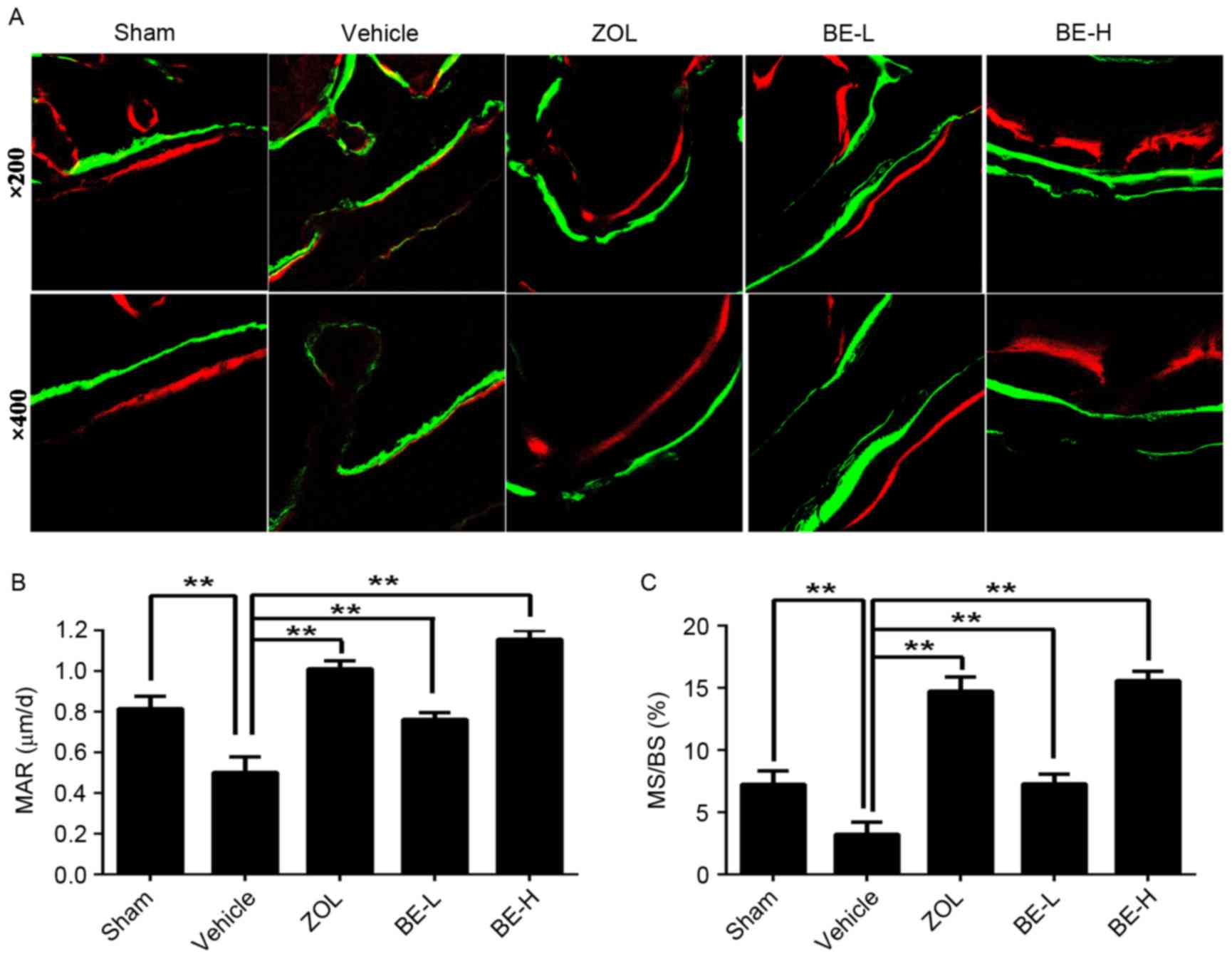|
1
|
McGrath C and Bedi R: The importance of
oral health to older people's quality of life. Gerodontology.
16:59–63. 1999. View Article : Google Scholar : PubMed/NCBI
|
|
2
|
Howson CP: Perspectives and needs for
health in the 21st century: 20th-century paradigms in 21st-century
science. J Hum Virol. 3:94–103. 2000.PubMed/NCBI
|
|
3
|
Dempster DW, Birchman R, Xu R, Lindsay R
and Shen V: Temporal changes in cancellous bone structure of rats
immediately after ovariectomy. Bone. 16:157–161. 1995. View Article : Google Scholar : PubMed/NCBI
|
|
4
|
Kribbs PJ, Chesnut CH III, Ott SM and
Kilcoyne RF: Relationships between mandibular and skeletal bone in
an osteoporotic population. J Prosthet Dent. 62:703–707. 1989.
View Article : Google Scholar : PubMed/NCBI
|
|
5
|
Kribbs PJ: Comparison of mandibular bone
in normal and osteoporotic women. J Prosthet Dent. 63:218–222.
1990. View Article : Google Scholar : PubMed/NCBI
|
|
6
|
Jeffcoat MK: Osteoporosis: A possible
modifying factor in oral bone loss. Ann Periodontol. 3:312–321.
1998. View Article : Google Scholar : PubMed/NCBI
|
|
7
|
Purdue PE, Koulouvaris P, Potter HG,
Nestor BJ and Sculco TP: The cellular and molecular biology of
periprosthetic osteolysis. Clin Orthop Relat Res. 454:251–261.
2007. View Article : Google Scholar : PubMed/NCBI
|
|
8
|
Sun W, Wang YQ, Yan Q, Lu R and Shi B:
Effects of Er-Zhi-Wan on microarchitecture and regulation of
Wnt/β-catenin signaling pathway in alveolar bone of ovariectomized
rats. J Huazhong Univ Sci Technolog Med Sci. 34:114–119. 2014.
View Article : Google Scholar : PubMed/NCBI
|
|
9
|
Black DM and Rosen CJ: Postmenopausal
osteoporosis. N Engl J Med. 374:254–262. 2016. View Article : Google Scholar : PubMed/NCBI
|
|
10
|
Cauley JA, Robbins J, Chen Z, Cummings SR,
Jackson RD, LaCroix AZ, LeBoff M, Lewis CE, McGowan J, Neuner J, et
al: Effects of estrogen plus progestin on risk of fracture and bone
mineral density: The Women's Health Initiative randomized trial.
JAMA. 290:1729–1738. 2003. View Article : Google Scholar : PubMed/NCBI
|
|
11
|
Cummings SR, Tice JA, Bauer S, Browner WS,
Cuzick J, Ziv E, Vogel V, Shepherd J, Vachon C, Smith-Bindman R and
Kerlikowske K: Prevention of breast cancer in postmenopausal women:
Approaches to estimating and reducing risk. J Natl Cancer Inst.
101:384–398. 2009. View Article : Google Scholar : PubMed/NCBI
|
|
12
|
Crandall CJ, Newberry SJ, Diamant A, Lim
YW, Gellad WF, Booth MJ, Motala A and Shekelle PG: Comparative
effectiveness of pharmacologic treatments to prevent fractures: An
updated systematic review. Ann Intern Med. 161:711–723. 2014.
View Article : Google Scholar : PubMed/NCBI
|
|
13
|
Khosla S, Bilezikian JP, Dempster DW,
Lewiecki EM, Miller PD, Neer RM, Recker RR, Shane E, Shoback D and
Potts JT: Benefits and risks of bisphosphonate therapy for
osteoporosis. J Clin Endocrinol Metab. 97:2272–2282. 2012.
View Article : Google Scholar : PubMed/NCBI
|
|
14
|
Shane E, Burr D, Abrahamsen B, Adler RA,
Brown TD, Cheung AM, Cosman F, Curtis JR, Dell R, Dempster DW, et
al: Atypical subtrochanteric and diaphyseal femoral fractures:
Second report of a task force of the American Society for Bone and
Mineral Research. J Bone Miner Res. 29:1–23. 2014. View Article : Google Scholar : PubMed/NCBI
|
|
15
|
Tella SH and Gallagher JC: Prevention and
treatment of postmenopausal osteoporosis. J Steroid Biochem Mol
Biol. 142:155–170. 2014. View Article : Google Scholar : PubMed/NCBI
|
|
16
|
Black DM, Bilezikian JP, Ensrud KE,
Greenspan SL, Palermo L, Hue T, Lang TF, McGowan JA and Rosen CJ:
PaTH Study Investigators: One year of alendronate after one year of
parathyroid hormone (1–84) for osteoporosis. N Engl J Med.
353:555–565. 2005. View Article : Google Scholar : PubMed/NCBI
|
|
17
|
Ostrov DA, Magis AT, Wronski TJ, Chan EK,
Toro EJ, Donatelli RE, Sajek K, Haroun IN, Nagib MI, Piedrahita A,
et al: Identification of enoxacin as an inhibitor of osteoclast
formation and bone resorption by structure-based virtual screening.
J Med Chem. 52:5144–5151. 2009. View Article : Google Scholar : PubMed/NCBI
|
|
18
|
Herczegh P, Buxton TB, McPherson JC III,
Kovács-Kulyassa A, Brewer PD, Sztaricskai F, Stroebel GG, Plowman
KM, Farcasiu D and Hartmann JF: Osteoadsorptive bisphosphonate
derivatives of fluoroquinolone antibacterials. J Med Chem.
45:2338–2341. 2002. View Article : Google Scholar : PubMed/NCBI
|
|
19
|
Thompson DD, Simmons HA, Pirie CM and Ke
HZ: FDA Guidelines and animal models for osteoporosis. Bone. 17 4
Suppl:125S–133S. 1995. View Article : Google Scholar : PubMed/NCBI
|
|
20
|
Assessment of fracture risk and its
application to screening for postmenopausal osteoporosis. Report of
a WHO Study Group. World Health Organ Tech Rep Ser. 843:1–129.
1994.PubMed/NCBI
|
|
21
|
Tuck SP and Francis RM: Osteoporosis.
Postgrad Med J. 78:526–532. 2002. View Article : Google Scholar : PubMed/NCBI
|
|
22
|
Yang J, Pham SM and Crabbe DL: Effects of
oestrogen deficiency on rat mandibular and tibial
microarchitecture. Dentomaxillofac Radiol. 32:247–251. 2003.
View Article : Google Scholar : PubMed/NCBI
|
|
23
|
Mavropoulos A, Rizzoli R and Ammann P:
Different responsiveness of alveolar and tibial bone to bone loss
stimuli. J Bone Miner Res. 22:403–410. 2007. View Article : Google Scholar : PubMed/NCBI
|
|
24
|
Dai QG, Zhang P, Wu YQ, Ma XH, Pang J,
Jiang LY and Fang B: Ovariectomy induces osteoporosis in the
maxillary alveolar bone: An in vivo micro-CT and histomorphometric
analysis in rats. Oral Dis. 20:514–520. 2014. View Article : Google Scholar : PubMed/NCBI
|
|
25
|
Al Habashneh R, Azar W, Shaweesh A and
Khader Y: The relationship between body mass index and
periodontitis among postmenopausal women. Obes Res Clin Pract.
10:15–23. 2016. View Article : Google Scholar : PubMed/NCBI
|
|
26
|
Salazar M, Hernandes L, Ramos AL, Salazar
Bde O, Micheletti KR, Paranhos LR, de Mendonça MR and Cuoghi OA:
Effect of alendronate sodium on tooth movement in ovariectomized
rats. Arch Oral Biol. 60:776–781. 2015. View Article : Google Scholar : PubMed/NCBI
|
|
27
|
von Wowern N: General and oral aspects of
osteoporosis: A review. Clin Oral Investig. 5:71–82. 2001.
View Article : Google Scholar : PubMed/NCBI
|
|
28
|
Chen H, Xu X, Liu M, Zhang W, Ke HZ, Qin
A, Tang T and Lu E: Sclerostin antibody treatment causes greater
alveolar crest height and bone mass in an ovariectomized rat model
of localized periodontitis. Bone. 76:141–148. 2015. View Article : Google Scholar : PubMed/NCBI
|
|
29
|
Liu X, Qu X, Wu C, Zhai Z, Tian B, Li H,
Ouyang Z, Xu X, Wang W, Fan Q, et al: The effect of enoxacin on
osteoclastogenesis and reduction of titanium particle-induced
osteolysis via suppression of JNK signaling pathway. Biomaterials.
35:5721–5730. 2014. View Article : Google Scholar : PubMed/NCBI
|
|
30
|
Toro EJ, Zuo J, Gutierrez A, La Rosa RL,
Gawron AJ, Bradaschia-Correa V, Arana-Chavez V, Dolce C, Rivera MF,
Kesavalu L, et al: Bis-enoxacin inhibits bone resorption and
orthodontic tooth movement. J Dent Res. 92:925–931. 2013.
View Article : Google Scholar : PubMed/NCBI
|
|
31
|
Rivera MF, Chukkapalli SS, Velsko IM, Lee
JY, Bhattacharyya I, Dolce C, Toro EJ, Holliday LS and Kesavalu L:
Bis-enoxacin blocks rat alveolar bone resorption from experimental
periodontitis. PLoS One. 9:e921192014. View Article : Google Scholar : PubMed/NCBI
|













